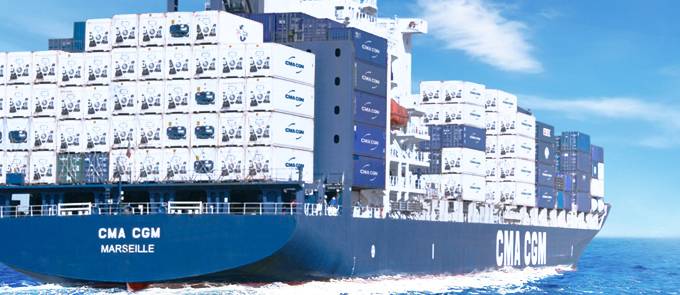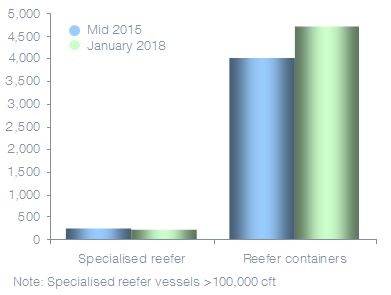Reefer containership capacity to increase 20 percent by 2018 - Drewry
Though specialized reefer fleet is shrinking and shows no signs of reversing in the future, the reefer containership fleet has increased by 15 percent year-on-year and is set to grow 20 percent by 2018, according to maritime research and consulting services provider Drewry’s latest Reefer Shipping Market Annual Review & Forecast.
Consequently, with a capacity restricted specialized fleet, there is no alternative but for cargo to be shipped by reefer containership, a trend Drewry says is accelerating with continued cargo growth. Seaborne reefer cargo grew 4.9 percent in 2014, all of which, and more, was carried by the reefer containership mode of transport.
Despite the significant increase in reefer containership capacity, cargo growth is also forecast to be strong. This will leave utilization levels on the reefer containership fleet virtually unchanged over the next few years at 20.4 to 20.6 cargo metric tons per ‘000 cubic feet equivalent of reefer container capacity.
To ensure that containership operators remain competitive where super-slow and ultra-slow steaming has become common-place (as well as lengthy voyage times and trans-shipment services), many container carriers are focusing on reefer-intensive services to compete with the specialized mode.
“The specialized reefer fleet has an average age of 25 years,” said report editor Kevin Harding. “With little likelihood of new buildings, in the large size range at least, ongoing recycling is inevitable, as is a shrinking fleet. However, the containership order book is substantial and is expected to remain so.”
Notwithstanding these developments, specialized reefer operator Seatrade is investing in a new building program of fully containerized reefer vessels, seeking to differentiate itself from the liner container carriers with shorter transit times, direct routings and reefer-dedicated box shipping services. In doing so, it has rebranded itself an FDD operator: Fast, Direct and Dedicated. The Company has firm orders for six vessels of between 500 and 700 feu of reefer capacity, and options for a further six. Whether other specialized reefer operators follow suit remains to be seen.
Despite the fleet changes for both modes of transport, cargo flows are forecast to continue to increase and therefore to weather any economic or climatic difficulties, at least on a global basis, although this will be tested in 2015/16 with the anticipated El Niño.
"Overall utilization levels are forecast to be relatively stable, although undoubtedly there will continue to be strong competition between the modes at a trade lane level,” Harding added.

















